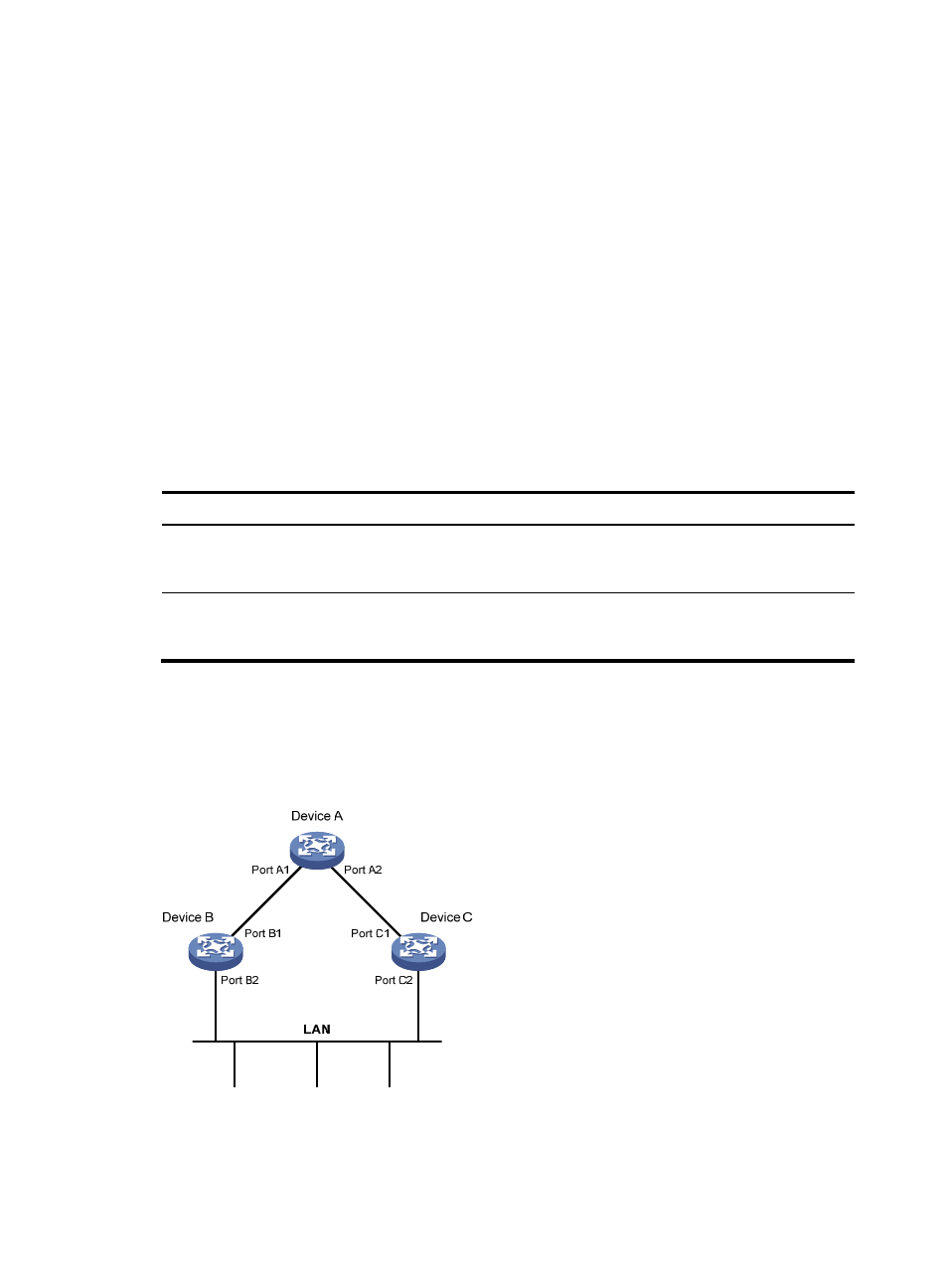Basic concepts in stp, Root bridge, Root port – H3C Technologies H3C S12500 Series Switches User Manual
Page 68: Designated bridge and designated port

55
Basic concepts in STP
Root bridge
A tree network must have a root bridge.
There is only one root bridge in the entire network. The root bridge is not permanent, but can change with
changes of the network topology.
Upon initialization of a network, each device generates and periodically sends out configuration BPDUs
with itself as the root bridge. After network convergence, only the root bridge generates and periodically
sends out configuration BPDUs. The other devices only forward the BPDUs.
Root port
On a non-root bridge, the port nearest to the root bridge is the root port. The root port communicates with
the root bridge. Each non-root bridge has only one root port. The root bridge has no root port.
Designated bridge and designated port
Table 5 Description of designated bridges and designated ports
Classification
Designated bridge
Designated port
For a device
Device directly connected with the local
device and responsible for forwarding BPDUs
to the local device
Port through which the designated
bridge forwards BPDUs to this device
For a LAN
Device responsible for forwarding BPDUs to
this LAN segment
Port through which the designated
bridge forwards BPDUs to this LAN
segment
As shown in
, Device B and Device C are directly connected to a LAN. If Device A forwards
BPDUs to Device B through port A1, the designated bridge for Device B is Device A, and the designated
port of Device B is port A1 on Device A. If Device B forwards BPDUs to the LAN, the designated bridge
for the LAN is Device B, and the designated port for the LAN is port B2 on Device B.
Figure 16 Designated bridges and designated ports